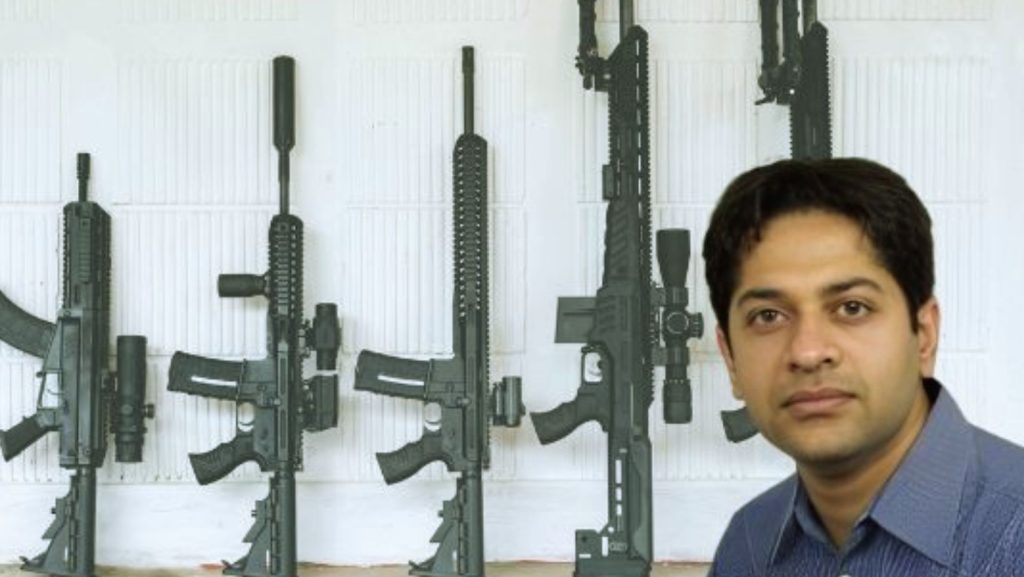
India’s latest contract to import American-built Sig Sauer Inc. SIG716 rifles has triggered heat and a debate over whether this is representative of all that is wrong with India’s weaponry modernisation efforts. In our piece yesterday, we highlighted an unusually frank public statement by the CEO of a small Indian private sector firearms company. You can read about that here.
Geopolitics and defence commentator Rohit Vats offers a counterpoint on the debate. This was published first on his social media handle, and being used here with permission:
Part 1 – The SiG-716i question.
(1) First, here’s an acknowledgement that our smalls arms procurement is a mess. For once, our infantry chaps have managed to give the armored guys a run for their money when it comes to screwing up procurement. And that’s quite an achievement!
(2) Second, coming to import of SiG-716i.
(3) IMO, this is a wrong example to quote when it comes to a case of preferring imports over domestic solutions. Please hear me out.
(4) First, 72,400 Sig-716 rifles already operate with frontline infantry battalions. While we can have an academic debate over selection of Sig-716i in the first place, the rifle is a reality.
(5) If we need more of battle rifles, we NEED to stick to SIG-716i now. Purely from a logistics point of view. You cannot have the Indian infantry fighting with different battle rifles.
(6) Rather than this piecemeal induction, I’d rather have one order to completely re-equip the infantry with Sig-716i and be done with it.
(7) How many battle rifles do we need?
(8) Well, assuming we’ve ~400 infantry battalions with ~800 soldiers/battalion, the numbers work out be something like this: (a) 100% soldiers with battle rifle – 400 x 800 = 320,000. (b) Mix of Battle-Rifles and Carbines: – 80% Soldiers with Battle-Rifles = 400 x (80% x 800) = 256,000 – 20% soldiers with Carbines = 400 x (20% x 800) = 64,000. * The above does not consider 66 odd RR battalions which primarily operate various AK series assault rifles.
(9) We will now have (66,400+73,000) Sig-716 battle rifles in total. – That is between 44% (320K requirement) to 54% (256K requirement) of the total frontline infantry battle-rifle requirement. ** Purely from a common sense and logistics perspective, why should the infantry battalions of the Indian Army be equipped with different types of Battle Rifles, even if the second one is a domestic solution? ** [PS: Did SSS Defense exist with products when first Sig-716i order was placed?] – This boat has sailed, and it makes no sense to tinker with it now.
Part 2 – The other requirements – AK-203 rifle and 5.56mm Carbine.
(1) If the IA needs a max of 320,000 Sig-716 battle rifles, what does the balance army operates?
(2) To the above, add the requirement for 425,000 5.56 x 45mm Carbines for which a tender is still outstanding. And the under-production AK-203.
(3) Left to me, I would’ve run a common, joint tender for Battle Rifles and Carbines. And asked for a single, lump-sum price for both the requirements.
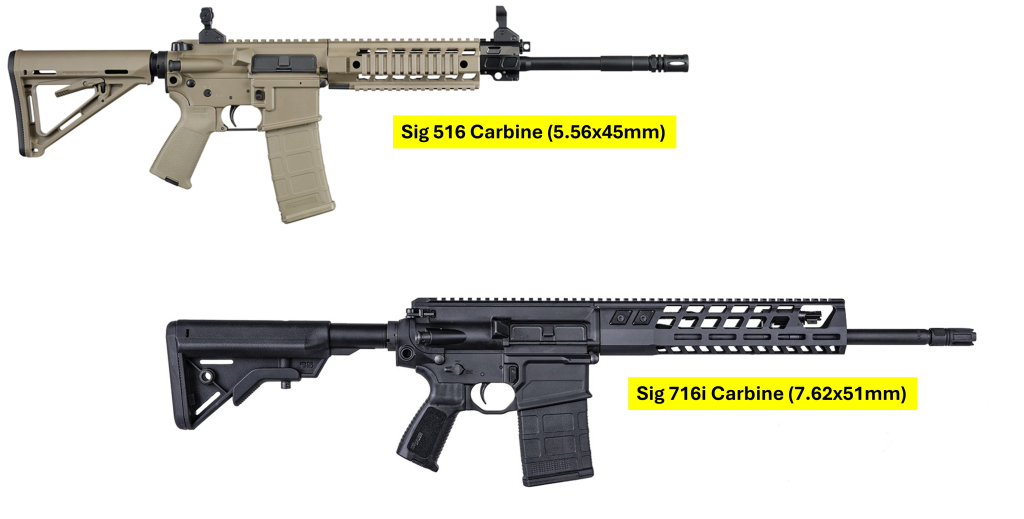
(4) Simply because I would want a single base rifle from a single vendor adapted as Battle Rifle and as a Carbine. This will ensure commonality of parts, ease of maintenance and logistics. And LOWER PER UNIT COST.
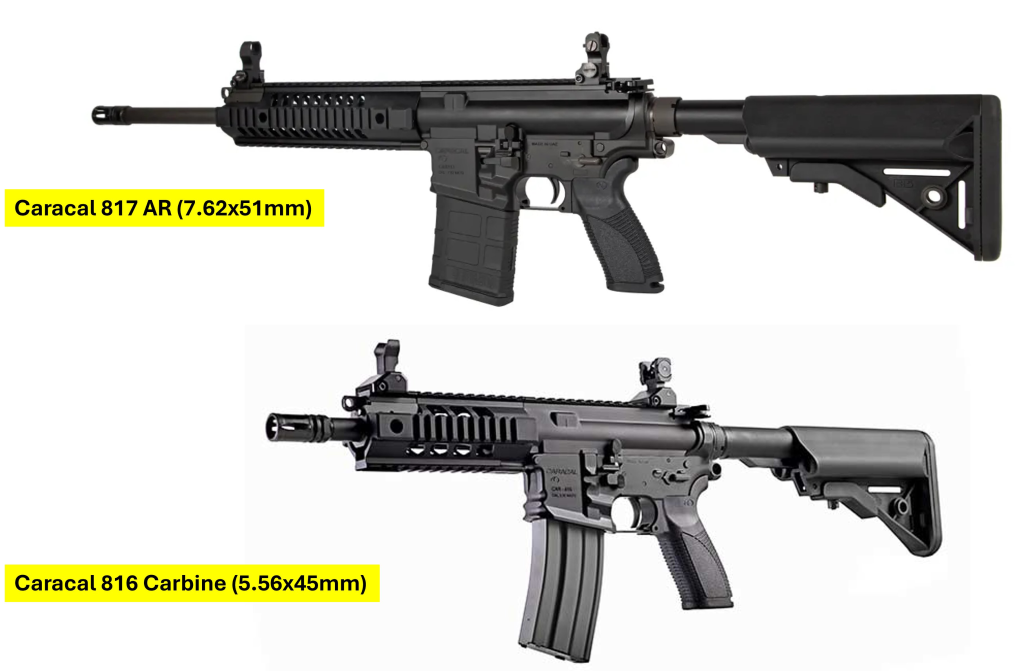
(5) But common sense and Indian defense procurement are opposite banks of a river, and twain shall never meet! – We ran separate tenders for Battle Rifles and Carbines with same vendors submitting different weapons and bids for each tender. [Caracal almost won a tender for 93,895 carbines in 2018 under FTP route but the same was cancelled in 2020 and fresh tenders issued]
The word is that 7.62x51mm Sig-716i will equip frontline infantry while 7.62x39mm Ak-203 will be the standard assault rifle for rest of the army. – 600,000 AK-203 are to be produced and procured (AK-203 never made any sense to me except that it seems like an attempt to keep the cost of re-equipping a large army with an assault rifle low). [PS: Asking again, was SSS Defense an option when AK-203 was short-listed as an option?] [different calibers, different rifles and logistics headache. But remember, common sense is in short supply!]

Both Sig-716i and AK-203 are done deals. – Which begs the question – where is the space for large scale orders by GENUINE Indian smalls arms manufacturers?
Part 3 – Carbine tender, Sniper Rifles, Squad Automatic Weapon (SAW – LMG), and MMG.
(1) As mentioned earlier, there is a carbine tender for 425,000 carbines (5.56x45mm). (2) Key contenders for this system are as follows.
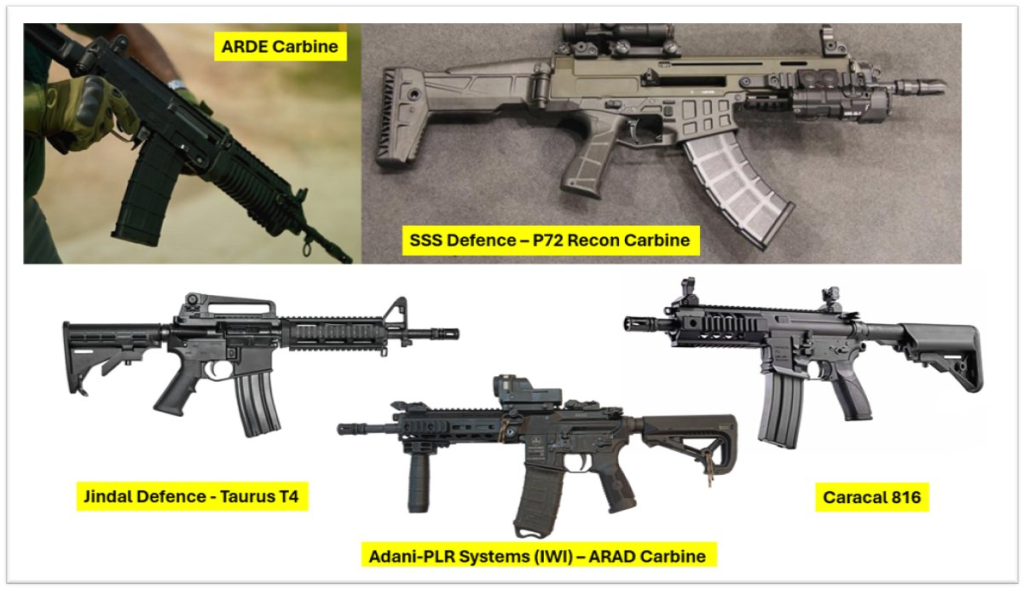
Of these, only the SSS Defense and ARDE Carbines are genuine IDDM products. Rest all of them are JVs with foreign partners and will involve only domestic production. – If we’re serious about creating a genuine MIC in small arms, company like SSS Defence needs to be given a shot at this tender.
Further, we have a huge armory of AK series rifles and Dragunov sniper rifles. SSS Defense has solutions in these segments as well and can help the Indian Army to modernize its inventory especially with the RR troops.
SSS Defense also offers a sniper rifle.
By all means, we need a domestic smalls arms MIC where we control the IPR and can get into upward spiral of iterative improvement. But that won’t come with screwdriver-giri in the form of JVs between local and foreign partners because no knowledge transfer will happen.
Though, working on the principle of least expectations from our MOD, I can live with screwdriver-giri as well because it will lead to adding domestic jobs and local production.
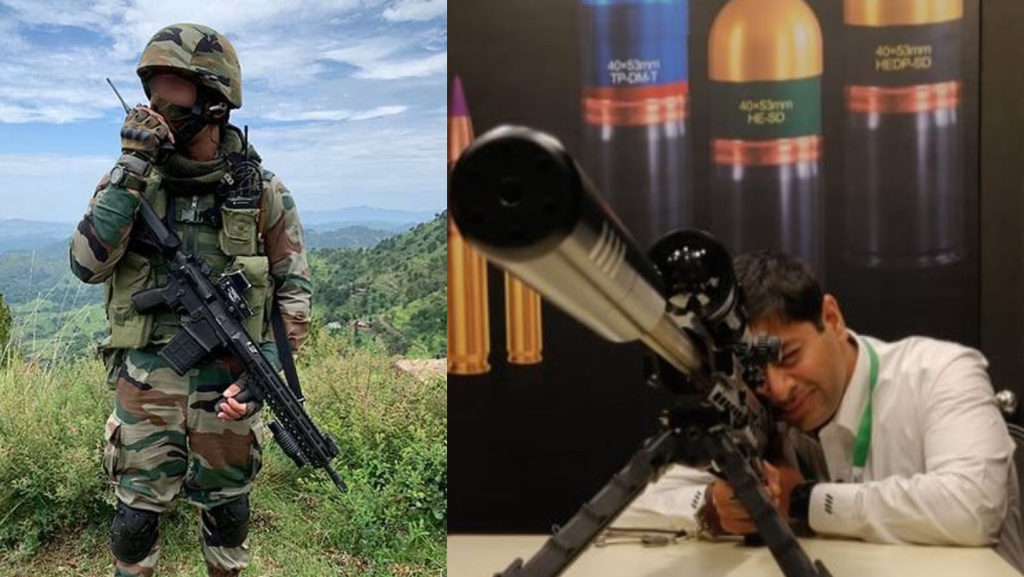
RESPONSE FROM SSS DEFENCE CEO VIVEK KRISHNAN:
I really liked [the above] post. Rohit, since you put in the effort to place the logistics angle. Also, you’re right in that SSS Defence did not figure in the first acquisition timeline but we were always there post it. From a military small arms doctrine perspective though I will continue to differ. And the reasons are as below:
1. The 7.62×51 chambered rifles have always been unwieldy. To cite real examples – the round is a heavy one and causes a beast of a recoil. An entire generation will train on it and yet find it difficult to operate with. I’ve had guys sporting recoil pads while firing the weapon.
2. Carrying more mags of this caliber is an extra weight burden and global armies have been trying to reduce that for years. In the context of belt fed LMG’s, that’s not as big an issue which is why machine gunners have felt at home with this round
3. The 7.62×39 cartridge is lighter and has stopping power to boot. It’s available in plenty and that too is a key reason for their global adoption. But you’ve got to understand that the NATO forces for the most part use the 5.56×45 mm while Russians use the 5.45×39 (not the 7.62×39 as is commonly believed). Yes, the 5.56×45 mm failed in Afghanistan but the Asymmetric warfare groups figured out a better steel arrow tip round to make the M4’s lethal. Classic example of innovation on the go with ammo.
4. There is no easier way to cripple the forces than adopt the 7.62×51 across the board though logistics may become easier. Missions aren’t all the same. For example, the Russians adopted the smaller rifle to fit in their BMP’s. I don’t see a way to do that with the larger battle rifles without compromises. M4’s and HK 416’s can still serve in these cases.
5. The world will slowly move to an intermediate caliber and there’s a sound reason for that. It’s not an easy logistics challenge but the soldier will be convenienced. But I can’t imagine a complete shift to the 7.62×51 from any angle 6. From a design angle, making a 7.62×51 caliber weapon on the same AR10 footprint as the SIG is no big deal. Indeed, shifting to a better op system than the DI will solve several issues while training is almost zilch since everything is retained on the muscle memory front.

All this rifles are amazing and good .if if these rifles will exchange with insas rifles completely its will be amazing
Indian Army frontline troops should be equipped with the most lightweight and with the best stopping power assault rifles overriding all other issues (price, domestic/foreign/JV, logistics, etc)in the interest of national defence
Indian military is screwed up for a long time and any govt, not even Modi, can do anything. Definitely not an old guy like our defense minister. You know why Pakistan doesn’t bother about Indian threat? Because they know we have a shitty military.
” Local for Vocal ” is only for say by PM while there ministers voucher otherway, this is not a force with pride who uses foreign equipment just to feed others at the cost of tax payers